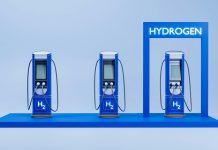
A common concern for electric vehicle (EV) owners is how well their vehicle’s battery performs in cold weather.
Lithium-ion batteries, the standard in most electric vehicles, tend to struggle in colder climates due to the freezing of their liquid electrolyte.
This issue leads to a severe decrease in the battery’s ability to charge, which is particularly troublesome in colder regions. However, a new breakthrough in battery chemistry might have a solution to this chilly problem.
The Current Problem: Freezing Electrolytes
In a typical lithium-ion battery, the electrolyte – a mixture of salt and solvent – is the key component that facilitates the battery’s function.
The electrolyte carries ions, charged particles, between the battery’s two electrodes, leading to the charging and discharging of the battery.
But when temperatures drop below freezing, the liquid electrolyte can freeze, impairing the battery’s performance.
The Solution: An Antifreeze Electrolyte
To tackle this issue, a group of scientists from the U.S. Department of Energy’s Argonne and Lawrence Berkeley National Laboratories have developed a fluorine-containing electrolyte that works efficiently even in freezing temperatures.
Their work is published in the journal Advanced Energy Materials.
The team, led by Zhengcheng “John” Zhang, a senior chemist at Argonne, not only found a solution to the freezing electrolyte issue but also identified why their solution works at an atomic level.
They believe this new electrolyte could not only work for electric vehicle batteries, but also for other electronics like laptops and smartphones, and energy storage for electric grids.
How Batteries Work: A Quick Overview
In a standard lithium-ion battery, the electrolyte is a mixture of a common salt (lithium hexafluorophosphate) and carbonate solvents.
These solvents dissolve the salt to form a liquid. As the battery charges, the electrolyte moves lithium ions from the cathode to the anode, both of which are essential parts of the battery.
The lithium ions exit the cathode, move through the electrolyte, and enter the anode.
During the initial charging cycles, clusters of these solvents hit the anode and create a protective layer known as the solid-electrolyte interphase.
This layer allows only the lithium ions to pass through, keeping the solvent molecules out. This process enables the anode to store lithium atoms which release electrons during discharge to generate electricity.
Why Current Batteries Struggle in the Cold
The problem with the existing design arises in cold weather. The electrolyte starts to freeze and loses its ability to transport the lithium ions into the anode.
This issue arises because the lithium ions are so tightly bound within the solvent clusters that more energy is needed to remove them from the clusters and pass through the interface layer compared to room temperature conditions.
As a result, scientists have been on the hunt for a more suitable solvent.
The New Solution: Fluorine-containing Electrolytes
After examining several fluorine-containing solvents, the research team identified the composition that had the lowest energy barrier for releasing lithium ions from the clusters at freezing temperatures.
They also understood why this specific composition was so effective. It depended on the position and number of fluorine atoms within each solvent molecule.
In laboratory tests, the new fluorinated electrolyte was able to maintain stable energy storage capacity for 400 charge-discharge cycles even at -4 degrees Fahrenheit.
The capacity was comparable to that of a cell with a traditional carbonate-based electrolyte at room temperature.
Looking to the Future: Safer and Efficient Batteries
Besides its excellent performance in the cold, the new electrolyte has an added advantage of being safer than the currently used carbonate-based electrolytes. Unlike the latter, it doesn’t pose a risk of catching fire.
Now, the team aims to patent their novel low-temperature electrolyte and is in search of an industrial partner to incorporate it into their lithium-ion battery designs.
In conclusion, this research presents a potentially game-changing solution for electric vehicle battery performance in cold climates.
With the ever-growing popularity of electric vehicles, improvements like these are critical for a sustainable and practical transition to cleaner forms of transportation.
The study was published in Advanced Energy Materials.
Copyright © 2023 Knowridge Science Report. All rights reserved.



